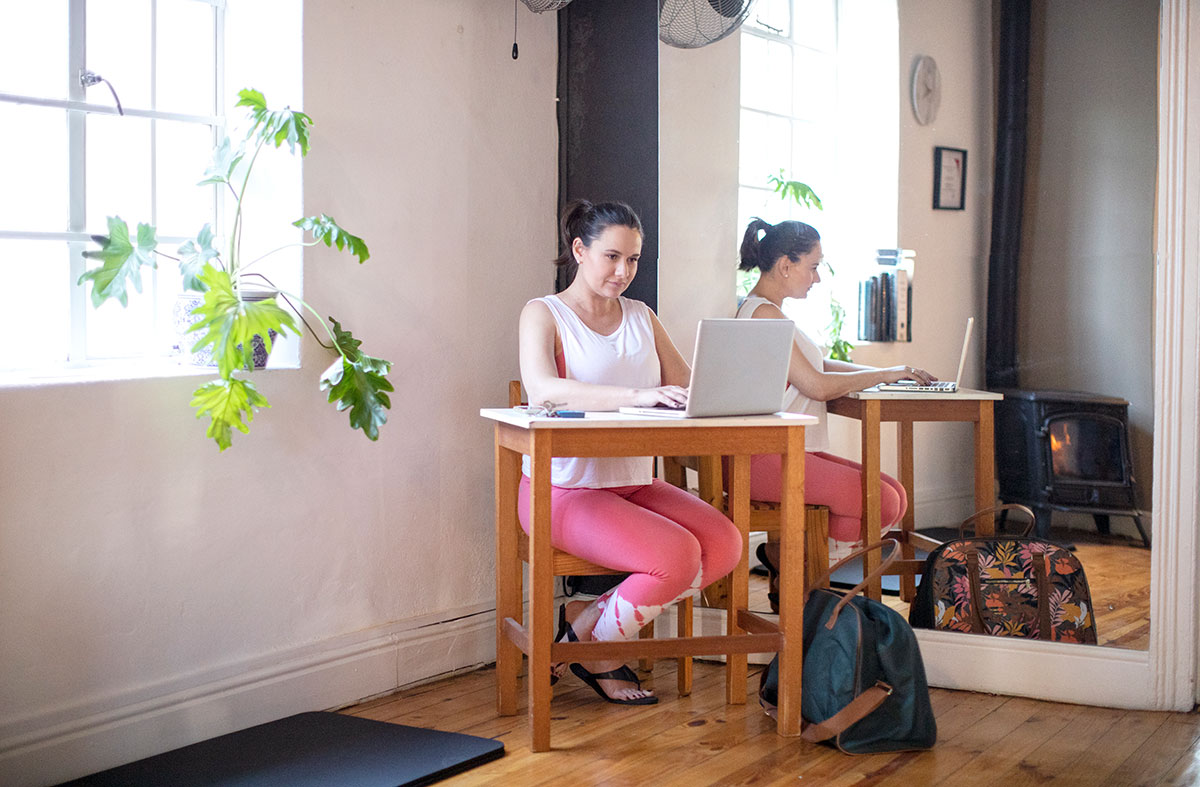[ad_1]
I want to…
Lose weight.
Tone up.
Eat better.
Build muscle.
If you’re a health and exercise professional, you undoubtedly hear these loosely defined goal statements (or versions of them) from new clients. It makes sense. Consumers come to us to “fix” something physical about them. While you, as the professional, have all the knowledge, skills and abilities required to address physical concerns, you also have an opportunity to promote more than physical wellness and assist clients in developing balanced harmony in multiple aspects of their lives. Consider elevating your practice by engaging clients in a way that reflects a holistic approach and a focus on developing lifestyle habits (not just physical fitness parameters).
Product Goals vs. Process Goals
Commonly, clients initially identify an outcome they hope to achieve by working with a health and exercise professional. These outcomes, or product-based goals, often reflect a desire to change a physical aspect they deem “imperfect.” This might sound like “I want to lose weight” or “I want to eat better.” These types of statements are not specific and they lack a clear timeline. Additionally, these goal statements don’t reveal the motivation behind them, which often relates to increasing energy, family, stress management or creating balance in their lives.
What is less common is when a client identifies a process goal, or one that centers on behaviors or lifestyle habits that influence and ultimately lead to a desired outcome. Here’s an example:
-
- Product goal: I want to eat better (something a client wants to achieve).
-
- Process goal: I will add a vegetable to dinner four nights a week (something a client does).
This is not to say that there isn’t value in product goals; there absolutely is. It’s a place to begin the conversation and it’s your opportunity to uncover the deeper desire and why the communicated outcome is valuable to the client. This is where you can and should collaborate with your client to identify behaviors that will facilitate the achievement of the identified outcome(s).
Process goals lead to performance or product goals because change is rooted in behavior.
The Guiding vs. Directing Challenge
For those of who us who primarily work as personal trainers, we generally use a directing style of communication; for example, we’ll typically inform clients what they will be doing, the repetition and set scheme, and the rest periods between sets. While you likely also coach and guide by cueing and providing feedback, this is not conversational communication.
To identify the motivation behind a client’s physical goal, we need to take the time to have a real conversation with them. This requires the use of a guiding style of communication in which you encourage, assist and support. Using this approach awakens the client to their own solutions (versus being told by the professional exactly what to do to accomplish their goal).
The challenge is shifting your mindset from directing and telling (and falling into the expert trap) to guiding and coaching (respecting and celebrating the client’s autonomy).
Guiding Clients Using a Holistic Lens
Your goal as health and exercise professional is not to “fix” a client’s issues or concerns. Rather, your job is to encourage your clients to make reasonable and necessary lifestyle changes that support the goals they want to achieve. Ultimately, it’s all about the behaviors they engage in and less about the “work” they do in the limited time we have with them during an exercise session. The question you might be asking at this point, and rightfully so, is: How do I accomplish this? How do I guide my client in a way that is holistic and balanced to help them live optimally? Here are some thoughts for you to ponder the next time you work with a client to establish a goal.
When (and not if) an existing or new client comes to you and expresses a desire to lose weight or change another physical aspect about themselves, engage in a conversation using principles and skills of motivational interviewing to reveal the client’s why and how it aligns with their values.
An Example from Practice
I like to start this conversation by encouraging my clients to evaluate their overall wellness using a wellness dimensions inventory. There are tools available online or you can create your own. I include this tool as part of a client welcome packet and the areas of focus are:
-
- Emotional
-
- Occupational
-
- Intellectual
-
- Social
-
- Spiritual
-
- Physical
My clients use a simple Likert-scale tool to identify which areas they are most satisfied with and which ones need more attention. This tool gives me insight into how a client perceives each dimension. From there, I ask necessary follow-up questions to discover more about the areas that are seemingly unbalanced by comparison to others.
After a client completes this inventory, I schedule a follow-up goal-setting session in which we review their dimensions evaluation. During this time, I engage them in a motivational conversation that ultimately gets at the heart of the initial “I want to lose weight” statement.
Through that conversation, for example, I might discover that a client rated their emotional dimension low because they feel overwhelmed by responsibilities between work and home (this points to an opportunity to teach about self-care and stress management). I also learn that the social dimension is low because my client doesn’t have the necessary energy to engage in social outings and doesn’t feel confident in their physical appearance (this is likely one unconscious reason why the physical goal was initially identified). As the conversation evolves, what is revealed is that the client’s why is underpinned by:
-
- Wanting improved energy
-
- Wanting time for self-care and social engagements with friends
-
- Wanting to feel better mentally and physically
What we observe is that each dimension affects another. They are interrelated. By only focusing on the physical dimension without acknowledging the need to find balanced harmony in the others, we only impact one part of the larger puzzle.
After the conversation concludes, it is time to encourage the client to prioritize areas of focus. As you guide this conversation, help the client identify behaviors or actions they can engage in to achieve that balance. For example, asking “What are some things you might be able to do to help you manage stress?” The client may respond by identifying “I could meditate for five minutes before bed” or “I will use an app to engage in breathing exercises twice a day.” Both are behaviors and actions as opposed to a general statement of “I need to manage stress.” We must come to an understanding of what that looks like to our clients and guide them accordingly through a thoughtful conversation.
As you work with a client over time, I encourage you to use the dimensions evaluation tool to illustrate a client’s progress, offer opportunities for reflection and to celebrate wins along their journey of change. In the end, we want our clients to develop fitness that transcends the physical dimension. The primary long-term goal is life fitness.
[ad_2]
Source link



